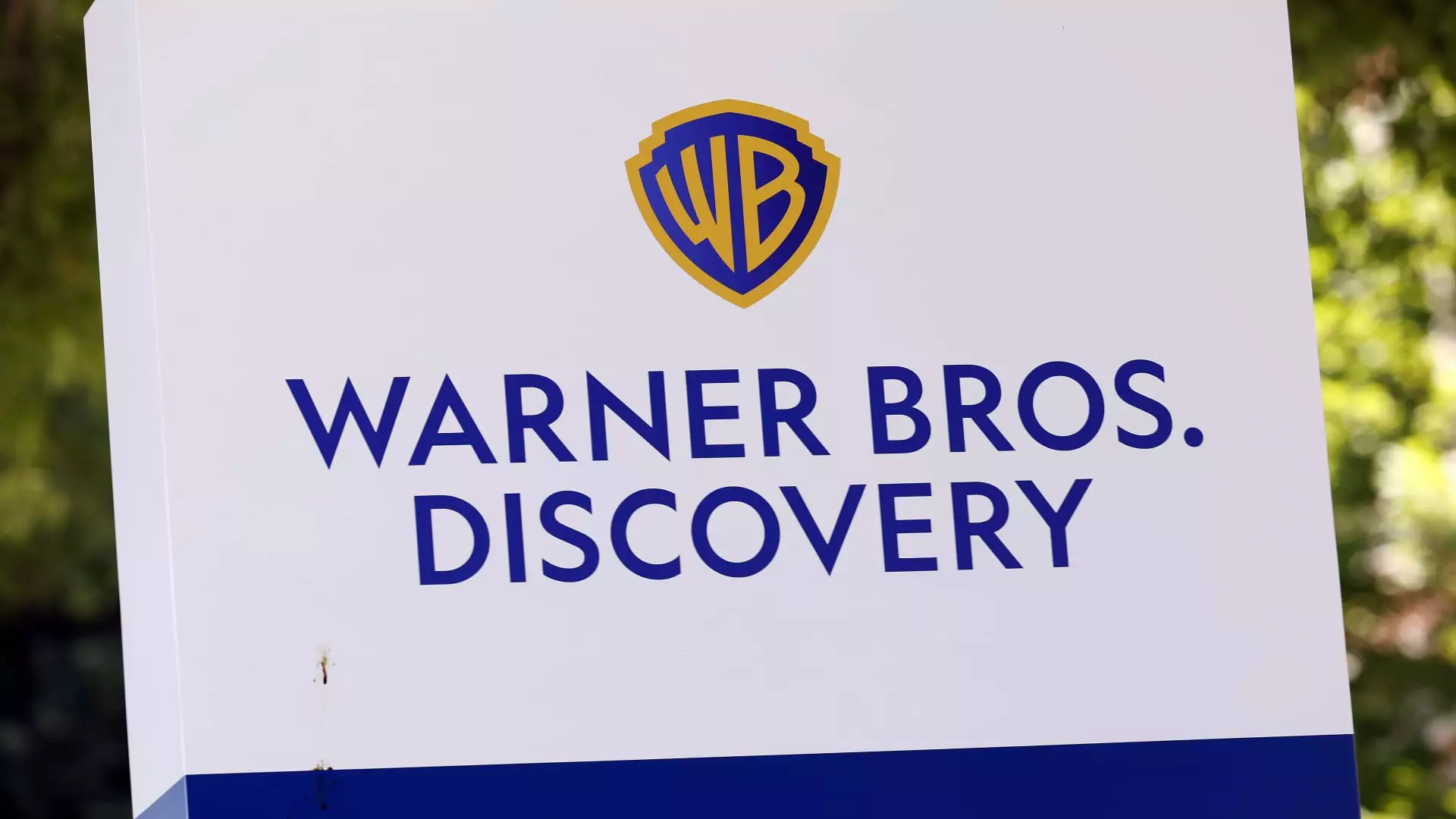Warner Bros. Discovery’s decision to divide itself into two distinct publicly traded companies has sent ripples through the stock market, with its shares soaring by 7%. This strategic bifurcation aims to create one entity focused entirely on WBD’s streaming services and cinematic ventures, while the second will handle traditional cable networks like CNN and TNT Sports. This separation signifies not merely a restructuring but a visionary embrace of the rapidly evolving media landscape. In an age where streaming floats the boat of major media players, one has to ask: Can Warner Bros. truly thrive in a world that increasingly shuns conventional cable? Their gamble could either be revolutionary or a prelude to a fall from grace if executed poorly.
Universal Health Services: A Cautionary Tale
Universal Health Services’ recent decline of over 6% illustrates the precarious nature of the healthcare sector in contemporary politics. CFO Steve Filton’s commentary about the sluggish recovery of procedural volumes sheds light on the broader anxieties surrounding healthcare in a post-COVID environment. Filton’s allusions to the impact of President Trump’s spending bill add another layer of concern. The healthcare industry has historically thrived under bipartisan support, but it seems an inevitable storm looms as Congress debates future funding. Could the precariousness of the current healthcare climate signify systemic issues needing immediate attention? The stock’s performance reflects uncertainty, and one must question whether the healthcare sector can weather the ongoing political turmoil effectively.
Topgolf Callaway Brands: The Power of Insider Confidence
Topgolf Callaway Brands has made waves on the market, rebounding by 8% following insider Adebayo Ogunlesi’s significant share purchase. His acquisition of 383,700 shares adds a powerful message of confidence to the brand, indicating strong internal validation of future financial health. In volatile markets, insider trading often serves as a barometer for investor sentiment. This leaves one pondering: how much weight should be given to insider actions, particularly when the aggregates of these trades indicate optimism that may not resonate on the larger trading floor? As an investor, one has to be cautious but also aware that confidence can sometimes spur genuine momentum in stock performance.
EchoStar’s Dismal Report: A Bankruptcy Reflection
EchoStar’s 6% stock decline due to bankruptcy considerations shows just how precarious the telecom sector is in a fast-evolving market. The whispers of a Chapter 11 filing expose vulnerabilities, especially in an age dominated by rapid technological change and increasing regulatory scrutiny. Protecting spectrum licenses may be EchoStar’s primary concern, but the potential bankruptcy offer hints at a larger question: Is it sustainable for telecom companies to balance innovation with fiscal responsibility? The increasing weight of telecom responsibilities alongside technological advancements may be too great a burden for some organizations to carry without tipping into insolvency.
Apple’s Inverted Expectations Before WWDC
As the annual Worldwide Developers Conference approaches, Apple’s stock teeters slightly upward, reacting to the anticipation surrounding new innovations such as Apple Intelligence. However, with an 18% decline year-to-date, the iPhone maker is facing escalating challenges in reclaiming its market dominance. Investors are clamoring for refreshing revelations, yet Apple’s struggles beg the question: Is it still the trendsetter it once was? The world watches to see if Apple can pivot effectively and counter its lagging innovation, or if it merely indulges in hype without substantial return.
Market Reactions and Speculations: The Aftermath
The stock movements of companies like Robinhood and AppLovin, declining after not being included in the S&P 500, paint a picture of fragile market psychologies. The reaction to perceived misalignment with established indices demonstrates how crucial market sentiment is in driving stock performance. With Robinhood dropping by 5% and AppLovin following suit with a 4% decrease, investors must wonder: how deeply entrenched is the belief in these indices as indicators of long-term viability? In a landscape marked by constant flux, it becomes increasingly vital to challenge the established norms of market measures.
Glimmers of Opportunity Amidst Dwindling Stocks
Interestingly, while sectors like fast food and investment banking dwindle—evident in McDonald’s nearly 2% slip and Moelis & Co.’s decline—there remains a glimmer of potential in sectors like quantum computing and cryptocurrency. Companies like IonQ, buoyed by strategic acquisitions, and Circle, reveling in IPO success, highlight that innovation should never be discounted, even in turbulent markets. In today’s financial climate, where habits shifted dramatically during the pandemic, the focus must include disruptive technologies as harbingers of future performance.
The exhilarating highs and disheartening lows of today’s stock market reflect the volatile interplay of industry innovation, regulatory challenges, and investor sentiment. As these dynamics evolve, remaining vigilant and critical becomes paramount for anyone navigating this turbulent landscape.

